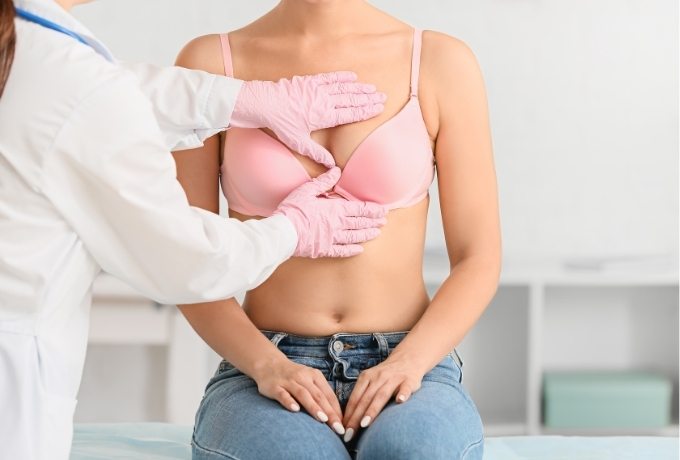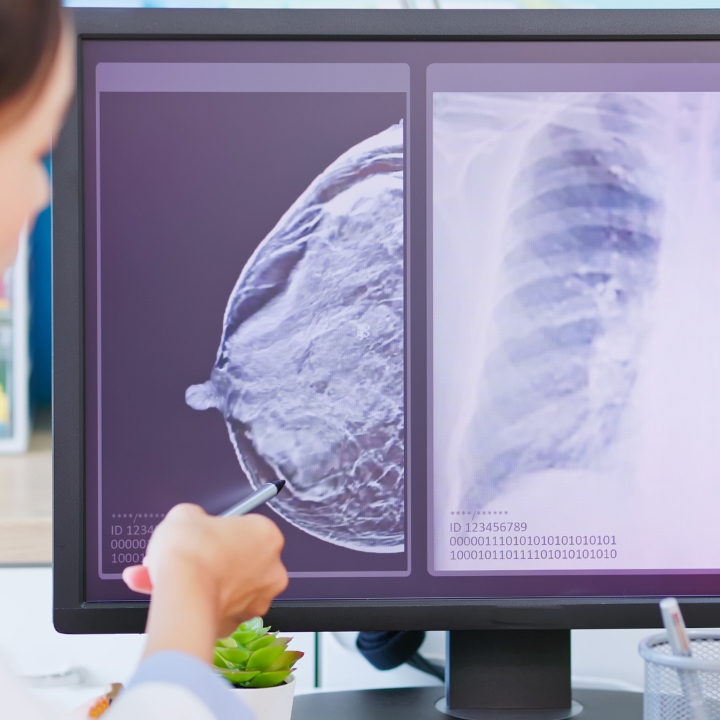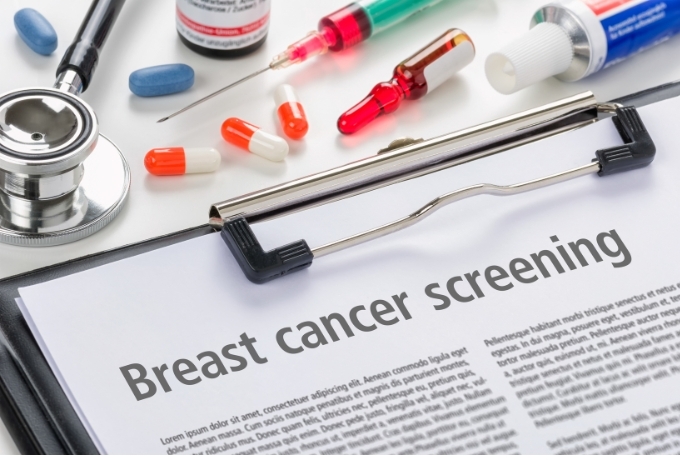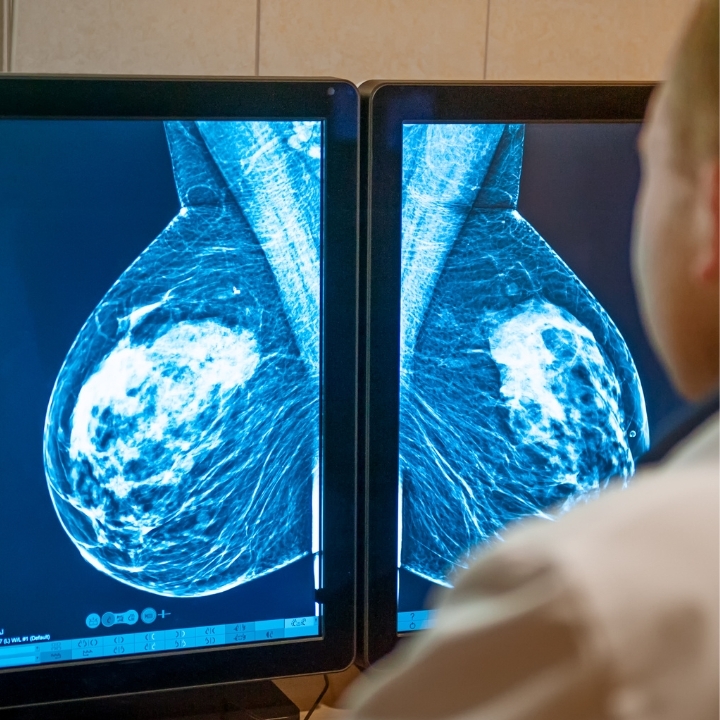Given how breast cancer is one of the leading causes of worldwide deaths, and how India ranks highest on that list, the significance of early detection of breast cancer cannot be ignored. In fact, according to a report by the National Breast Cancer Foundation, with early detection of breast cancer in the localized phase, the five-year survival rate stands at 99%, says the American Cancer Society.¹ This is why governments and international institutions promote timely diagnosis via effective screening methods, proper training, and enhanced public awareness.
When it comes to reducing cancer deaths, two things are of utmost importance—first, early detection and second, quality treatment. Your treatment becomes much easier, and the chances of its success also get heightened with early detection. Regular checkups and screenings are the easiest and the most effective ways to diagnose these diseases at an early stage.
The importance of early breast cancer detection can be attested by the fact that it is one of the three pillars of the WHO Global Breast Cancer Initiative. Using early detection, timely diagnosis, and quality treatment, WHO aims to lower global breast cancer mortality by 2.5% every year.²
Further, the National Breast Cancer Foundation also revealed how, with early detection, the five-year survival rate goes to 99%.¹

Now that you know the importance of early detection of breast cancer, let's move ahead. Let's see some of the most reliable breast cancer detection methods. This includes medical and self-exams, mammograms, and more.
Mammography is a type of breast imaging. It uses X-rays for the early detection of breast cancer and other breast concerns. Mammogram screening helps detect tumours which are otherwise hard to detect.
Your mammogram screening can be of different types, for example, 2D and 3D mammograms. The 2D mammogram is a common screening method that provides a 2-dimensional image of your breast. Alternatively, 3D mammograms are more detailed and use X-ray images from several different angles.
Next is a breast ultrasound, which can be used by healthcare advisors to understand the nature of your breast lumps. It helps the doctors understand whether your lump is filled with fluid or is solid. It also captured palpable lumps that have a chance of being missed in mammogram screenings.
Breast MRI shows high sensitivity when it comes to serving as a diagnostic tool for cancer detection. It is widely used for individuals at high risk because of its precision. However, it can also be used alongside mammography. A breast MRI is generally performed post-biopsy to see if there is any concern with the other breast or to gauge the spread of the tumour.

Your doctor might go for a physical breast exam as the first step to see if there's anything not-so-typical with your breasts. You can also go for self-exams where you can use visual and physical tests to see if there are any symptoms of breast cancer. Your self-exams keep you aware of how your breasts generally look so that you're easily able to identify any change, lump, or abnormalities in your breasts if they appear.
These breast checkups are important to ensure you live healthy and long without worrying about any disease and its consequences.
Screening is nothing but the tests taken to see the prevalence of a disease in individuals with no symptoms. The reason behind such screenings is simple: to detect a disease as early as possible, even before the symptoms of the same develop. Here are some of the screening recommendations for breast cancer detection:³

These refer to women with no history of cancer, no family history, absence of chemo records, and no excess BRCA gene mutations.
Women between 40 to 44 have the option to start annual mammograms. Women in the age range of 45 to 54 years old must get annual mammograms done. Post 55, you may get these screenings done every alternate year or continue with regular yearly checkups.
Women who are highly vulnerable and are at greater risk shall start getting their yearly mammograms from the age of 30. Here is who we refer to as high-risk women:
Breast imaging plays a crucial role in the early detection of breast cancer and its assessment. In fact, for individuals struggling with clinical symptoms, imaging methods help differentiate between something normal and suspicious. The three popular imaging techniques, mammograms, MRI, and breast ultrasound, each have their pros and cons.
For example, different types of mammograms offer different levels of precision. There are 2D mammograms to capture a two-dimensional picture of your breast, while a 3D mammogram captures images from several different angles, meaning better details and precision. Further, in case of false reports or missing small lumps, individuals complement mammograms with ultrasound or MRI. The MRI uses radiation to see the spread of the tumour. Alternatively, ultrasound can help doctors have some idea of the nature of your breast lumps.
Before you start searching and finalizing the mammograms near me searches, don't forget to understand their price structure. The normal mammography price ranges between ₹1500 to ₹2500 in India. Additionally, the digital mammograms start from ₹5000.
However, it is important to understand that these mammography test prices may vary based on certain factors. This includes:
Compare the costs, reviews, equipment, and testimonials of radiologists near you and then make an informed decision.

Early-stage breast cancer prognosis is helpful in several ways, be it enhancing your treatment quality or improving your longevity. Here is how it helps:
Breast cancer is still a taboo in India which leads to social stigma and embarrassment around the same. Additionally, it also causes late diagnosis, reducing the chances of a successful treatment. Alternatively, early detection of breast cancer can make a great change in improving India's position in global cancer deaths. With tools like mammograms, MRIs, and breast ultrasounds, you can get your screening done for the best and most personalized treatment. Additionally, there is very much the need for awareness around the same topic. Don't hesitate to read and ask questions if you have any. If you feel any change in your body, make sure to visit a doctor.
Book an appointment today and get answers to all your breast cancer queries!
Some of the most effective methods for early breast cancer detection include mammograms, breast MRIs, breast ultrasounds, and physical exams.
For women with an average risk of breast cancer, you may start your annual screening by 40. However, if you're someone with high-risk factors, like family history, BRCA1 or BRCA2, start your annual mammograms by 30 only.
Several signs and symptoms signal early breast cancer. This includes any kind of change in your breast’s shape, size or texture, breast or armpit lumps, nipple discharge, swelling, pain, and so on.
For women with average risks, you may consider getting your mammogram screening done once every year.
Yes, there is a high chance that when cancer is detected at an early stage, it can be treated easily and successfully. The 5-year survival rate also improves in such cases.
Family history is an important tool to assess one’s vulnerability and risk of developing these cancers. This happens because a few cases are also hereditary. This also means that the stronger your family history is with more and more relatives with cancer cases, the more you're at risk.
Yes, there are a few risks associated with mammograms. Sometimes, they might generate false reports, which can lead to additional testing, increasing costs and anxiety. With mammograms, you are also exposed to radiation. Further, sometimes these screening mammograms aren't able to catch smaller cancers. Thus, it is always better to assist mammograms with other methods like breast MRI.
Screening mammograms are like regular checkups performed to identify the early signs before the occurrence of any symptoms. However, diagnostic mammograms if anything suspicious is reported on screening mammograms or if there are clear symptoms and warning signs.
Making simple changes in your lifestyle can help a lot in preventing and reducing the risk of breast cancer. This includes eating healthy, avoiding smoking, being physically active, maintaining a good weight, etc.
References:
Medically Reviewed by Dr. Shiva Kumar Uppala
Medical Director, Surgical Oncologist & Laparoscopic Surgeon (MS (General Surgery), M.Ch. (Surgical Onco) FMAS, FAIS)